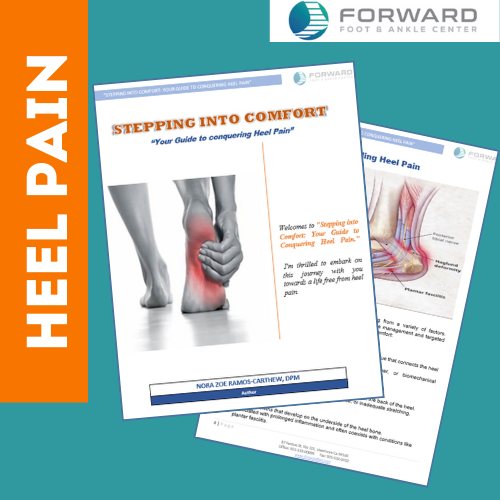Are you suffering from persistent heel pain that just won't go away? Does it feel like a sharp pain on that very first step when you first get up from a chair or bed? I know how it feels because I used to suffer from heel pain, which started during my first year of residency, from standing for many hours. I found that orthotics have worked for me, and I have been wearing them for over 25 years. I can help you find the answer to your heel pain. Don't let it slow you down any longer! It's time to put your best foot forward with the help of experts who genuinely care.
Heel pain is a common complaint that affects people of all ages and walks of life and can be caused by various factors. It can range from mild discomfort to debilitating agony, significantly impacting one's quality of life and mobility. It's important to understand that heel pain is not a natural part of aging; it's an injury that can be effectively treated, especially when addressed promptly. Please don't hesitate to reach out and schedule an appointment with us.
Symptoms of Heel Pain:
The symptoms of heel pain can vary depending on the underlying cause. Common manifestations include:
- Pain Underneath the Heel: The most typical location of heel pain is underneath the heel bone. The pain may be sharp, dull, or throbbing in nature.
- Pain at the Back of the Heel: In cases of Achilles tendinitis or bursitis, the pain may be felt at the back of the heel, close to where the Achilles tendon inserts into the bone.
- Stiffness and Discomfort: Heel pain can often be accompanied by stiffness and discomfort, particularly after rest or in the morning.
- Swelling and Redness: Inflammation may cause swelling and redness in the affected area.
- Difficulty Walking: Severe heel pain can make walking or standing for prolonged periods challenging.











 also lead to arch pain.
also lead to arch pain.



